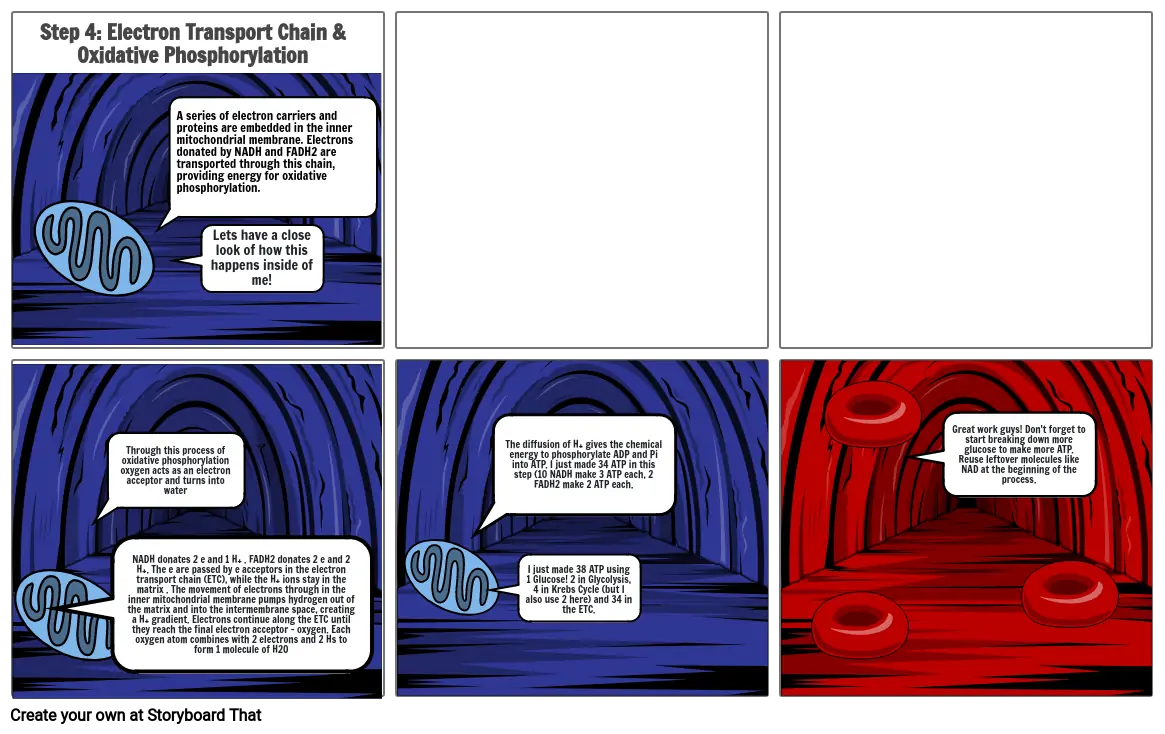cellular respiration part 2

Storyboard Text
- Step 4: Electron Transport Chain & Oxidative Phosphorylation
- A series of electron carriers and proteins are embedded in the inner mitochondrial membrane. Electrons donated by NADH and FADH2 are transported through this chain, providing energy for oxidative phosphorylation.
- Lets have a close look of how this happens inside of me!
- NADH donates 2 e and 1 H+ . FADH2 donates 2 e and 2 H+. The e are passed by e acceptors in the electron transport chain (ETC), while the H+ ions stay in the matrix . The movement of electrons through in the inner mitochondrial membrane pumps hydrogen out of the matrix and into the intermembrane space, creating a H+ gradient. Electrons continue along the ETC until they reach the final electron acceptor – oxygen. Each oxygen atom combines with 2 electrons and 2 Hs to form 1 molecule of H2O
- Through this process of oxidative phosphorylation oxygen acts as an electron acceptor and turns into water
- The diffusion of H+ gives the chemical energy to phosphorylate ADP and Pi into ATP. I just made 34 ATP in this step (10 NADH make 3 ATP each, 2 FADH2 make 2 ATP each.
- I just made 38 ATP using 1 Glucose! 2 in Glycolysis, 4 in Krebs Cycle (but I also use 2 here) and 34 in the ETC.
- Great work guys! Don't forget to start breaking down more glucose to make more ATP. Reuse leftover molecules like NAD at the beginning of the process.
Over 30 Million Storyboards Created

